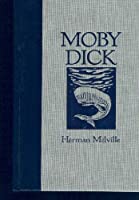Wuthering Heights
(Part of the Real Reads Series)
You Might Also Enjoy
Customer Reviews
Rated 5 starsSuper Book - Take my word on it!
I have been an Access developer since 1.1 (1993). I have bought many a book over the years. Some good, some bad. This book, however, is super! It is designed totally with the Access developer in mind. All of the questions that popped into my head seemed to be answered in practical terms chapter by chapter. The organization is terrific and the flow is second to none. The topics that are worth repeating are repeated while others...
0Report
Rated 5 starsOther Books are "Streets", this one is a "Highway"
In the last 18 months I have spent time and money reading a dozen of books in order to acquire the necessary knowledge to migrate from Access to VB/SQL Server. I've tried the enclosed code and learnt many things.However, until three days ago I didn't know "how" and "when" migration would happen.I've read this book in 3 days and only now I know I will start tomorrow!In every book I read I found something helpful, but this one...
0Report
Rated 5 starsVery good book
In October 2000 I had to create a reliable Access / SQL-Server project but I did not find any useful documentation. A few months later I found this book and gladly it shows the same techniques I developed. If anyone tells you to migrate Access tables to SQL-Server read this book first !!! One remark though: the authors suggest to use Stored Procedures wherever you can. Using Views for Select queries is faster and you can put...
0Report
Rated 5 starsA great Access book, a fantastic SQL Server book.
If you are an Access developer and you want to start writing professional database programs with SQL Server then this is the book to get. Even if you're already writing programs with SQL Server as your database, believe me, you need this book, too. You are sure to learn enough in the first 15 minutes to justify the price.
0Report
Rated 5 starsIf Access was dead, Mary and Andy sure brought it new life!
They pulled no punches: from the very beginning of the introduction to this book, Mary and Andy hit the very first point that every Access developer has to deal with -- Access is dead, Access is a toy, etc. etc. Of course, 800 pages later they have proven that all the people who thought this were not very bright (or at least did not know much about Access!).Especially cool are the huge chapters on views, stored procedures,...
0Report




















































